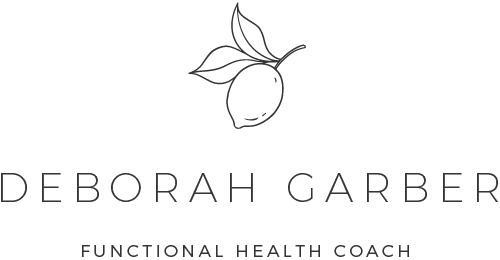The Fats We Eat
Long-Chain-Saturated-Fat
There is almost no topic that has caused more controversy over the last 50 odd years than the topic of dietary fat. There are the low-fat proponents, the high-fat proponents and those in between. When examining native peoples in different parts of the world one discovers that both low and high fat diets can provide excellent sustenance and good health to those who have not been exposed to the toxic western industrialised food system. It seems that we have been lead astray, and that it is not how much fat, but rather what type of fat we eat that really matters. And no, the good fats are not the ones we have been lead to think they are. Here is a brief outline of the types of fat we eat, with thanks and acknowledgements to articles written by my teacher Chris Kresser.
Fats are made of chains of carbon and hydrogen atoms. If they contain only single bonds between the carbon molecules they are called ‘saturated’, because the carbon atoms are saturated with hydrogen atoms making them solid at room temperature. Monounsaturated fats have one double bond in the fatty acid chain, all other bonds being single bonds. These fats are liquid at room temperature, but solidify in cold temperatures. Polyunsaturated fats have more than one double carbon bond in their backbone and are fragile and always liquid.
1. Long Chain Saturated Fat:
Myristic, palmitic and stearic acid. These fats are mostly found in milk and meat of ruminant animals like cattle and sheep. They form the core structural fats in the body and comprise 75%-80% of fatty acids in most cells. They are the primary storage form of energy for humans. When the body stores excess energy from food, it stores it primarily as long-chain saturated fat. This fat is good for us and should be our main source of dietary fat.
2. Medium Chain Triglycerides
MCTs are another type of saturated fat. They are found in coconut and mother’s milk and they have unusual properties. They don’t require bile acids for digestion, and they pass directly to the liver via the portal vein. This makes them a very good source of easily digestible energy. They are used to feed people who have had sections of their intestines removed and cannot digest solid food. They are high in lauric acid, a fat found in mother’s milk that has anti-bacterial, anti-viral and antioxidant properties. MCTs have become very popular with proponents of the ketogenic diet and are said to be excellent brain food.
3. Monounsaturated Fat
Oleic acid is found primarily in beef, olive oil, avocados, lard and nuts like macadamias. Like saturated fats, MUFAs form the core structural fats of the body and are non-toxic even at high doses.
The above three fats should form the bulk of our fat intake. They are not toxic and they will:
· Reduce the risk of heart disease by raising HDL cholesterol, lowering triglycerides, and reducing levels of small, dense LDL cholesterol.
· Increase muscle mass. Muscle is composed in equal weight of fat and protein.
· Stabilise energy and mood. Fat supplies a steadier supply of energy throughout the day than carbohydrates, which can cause fluctuations in blood sugar.
4. Polyunsaturated Fat: Omega-6 and Omega-3
Polyunsaturated fats are fragile and vulnerable to oxidative damage, a process that creates free radicals in the body and raises our risk for many diseases from heart disease to cancer. We should not consume more than 4% of our fat intake in PUFAs. The ratio of Omega-6 to Omega-3 should be 1:1, but today most of us are consuming anything in the range of 10:1-25:1 of Omega 6 to Omega-3, which means that some people are eating up to 25 times the amount of recommended Omega-6 fat. This is the cause of the modern epidemic of cardiovascular disease, type 2 diabetes, obesity, metabolic syndrome, autoimmune disease and more.
Omega-6 – Linoleic Acid
This fat is found in small to medium amounts in many foods such as fruits, vegetables, cereal grains and meat, in the dark meat of the chicken with skin, and in most nuts and seeds, which if eaten in moderation as whole foods do not pose a problem. However, it is found is very large quantities in industrial processed and refined oils such as soybean, cottonseed, corn, safflower and sunflower. These oils are in just about every processed food from salad dressing to chips, crackers, most commercial plant milks and not to forget - restaurant food. Although Omega-6 is an essential fatty acid that cannot be made by the body, we only need small amounts of it in our diet, in fact, less than 0.5 percent of our calories.
Omega-3
Omega-3 can be divided into ALA (alpha-linolenic acid) – a short chain fatty acid, and EPA&DHA – long chain fatty acids. ALA is found in plant foods like walnut and flax, and EPA and DHA are found in seafood and to some extent in the meat and fat of cattle and sheep. We need both the ALA and the EPA and DHA. ALA can be converted into EPA and DHA but not efficiently. We really do need the animal sourced Omega-3.
5. Trans Fats
There are two types of trans-fat: natural and artificial. The primary natural trans-fat Conjugated Linoleic Acid (CLA) is found in small amounts in the meat, fat and dairy fat of cattle and sheep. CLA is not harmful and may have anti-cancer properties and other benefits. Artificial trans-fats have been linked with a variety of diseases and should be avoided at all costs.

